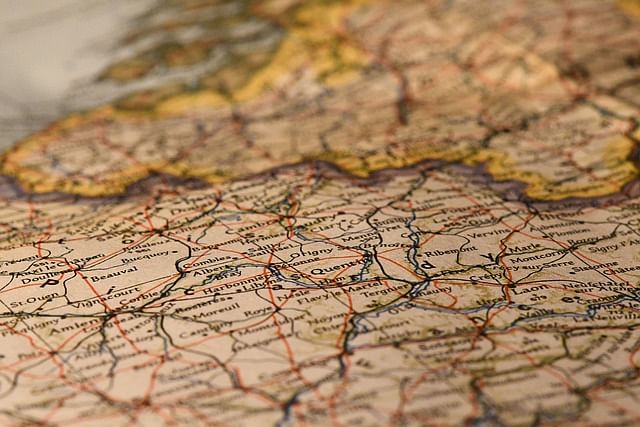The year was 1945, following a bloody war across the 38th parallel, the Korean Peninsula got bifurcated into North and South Korea. The historical fraternity among its people gave way to a sense of hostility and bitterness. This incident shows that while ‘Geography may remain the same, history need not’.
Geography denotes the physical setting – the area, landforms, water bodies, rocks, natural resources,etc. As evident, these features are largely static-devoid of any drastic changes. On the other hand, history is shaped by the people. It is our perceptions, policies, ideas and actions, which shape the course of History.
Thus, while geography of the African continent has remained the same – endowed with rich reserves of minerals, oil and forest resources. Its History has undergone significant changes.
The History of Africa, reeks of slavery, colonialism, expectation, extreme hunger and poverty. While many countries of Africa still grapple with the myriad challenges related to poverty, many countries have already started on the path of progress as well. For instance, using its natural resources in a prudent manner, South Africa could bring material changes in the lives of its people. Today, it has become a regional leader.
However, it is not only the domestic realm which shows the dynamism of history in contrast to Geography. The realm of international relations also depicts the same. It is often said that, “we can choose our friends but not our neighbours.” The geographic location of any country determines its neighborhood. At the same time, the History of neighbourhood keeps on changing, based on the Foreign Policy of those countries. The Indian subcontinent presents a classic example of the same.
India and Pakistan are located in geographic proximity to each other while this geography has remained unchanged over the decades, the history of two countries could not have followed a more zigzag path. While ancient and medieval history show a deep sense of fraternity – in fact, oneness among the populations. Modern history is marked by a definite bitterness due to the communal policies followed by a few leaders.
On the other hand, we have the example of Bhutan. The kingdom of Bhutan waged a war against British Indian policies of expansion. This precipitated hostility between the two. The dawn of independent India saw a very significant transformation in relations. Having established the inherent dynamism of History, the next logical question that needs to be addressed is:
What makes history change?
In his famous book, ‘The Da Vinci Code’, Den Brown stated that “By its very nature, history is always a one-sided account”. This statement explains the single most important factor in shaping History – the PERCEPTION of people who are at the helm of affairs. During the World war 1, while France and England saw the formation of their alliance – Entente Cordiale as a step towards improving bilateral ties; Germany saw it as a step towards its encirclement. The different perceptions of leaders for various events turned the course of history towards the ‘Great War’.
IDEAS are another crucial factor shaping history. The idea of steam engine marked a new era in industrial history of the world. New ideas bring hitherto unknown elements in the course of history. This gives it a unique shape.
The above mentioned factors implicitly highlight the human element of history. It is the people who conceive ideas and perceive actions. Moreover, their acceptance or denial of anything has a lasting influence on the course of history. Until a few decades ago, India accepted the inhuman practices of Sati, Slavery, untouchability, etc. This resulted in a painful history for Indian women as well as the Dalits.The transition from an acceptance of such evils to a strict denial was made possible with the efforts of various social reformers like Raja Ram Mohan Roy, Pandita Ramabai, Dr. B.R. Ambedkar to name a few.
Thus, the fact that History could be changed was made possible by generating a consensus among people. That practices still have legitimacy in the minds of few Indians show that History will take further turns with reform in the attitudes. There are certain peripheral factors as well that contribute towards changing history. Changes in politics, in system on governance, spread of public utility services, rise of new social movements, etc. These contribute towards changing the mental and material conditions of people. This influences their ideas in turn. Therefore , it is quite evident that, “while geography chooses us,we are the ones who choose history”.
The geographical context in which one is situated eagerly remains the same; the historical context is bound to change. Changes occur when different people interpret history in different ways. Changes also occur when different people perceive similar issues in different manners.They chart a course of action according to their own thoughts and ideas. This gives unique twists and turns to the course of History. For, as Franz Kafka said, “Paths are made by walking”.
And History thrives along these paths, changing with every twist and turn.
Muhammad Waseem Bhat, a recipient of National Youth Icon Award 2019, is a literature student at University of Delhi. He hails from Lolab, Kupwara.
DISCLAIMER: The views and opinions expressed in this article are the personal opinions of the author. The facts, analysis, assumptions and perspective appearing in the article do not reflect the views of GK






